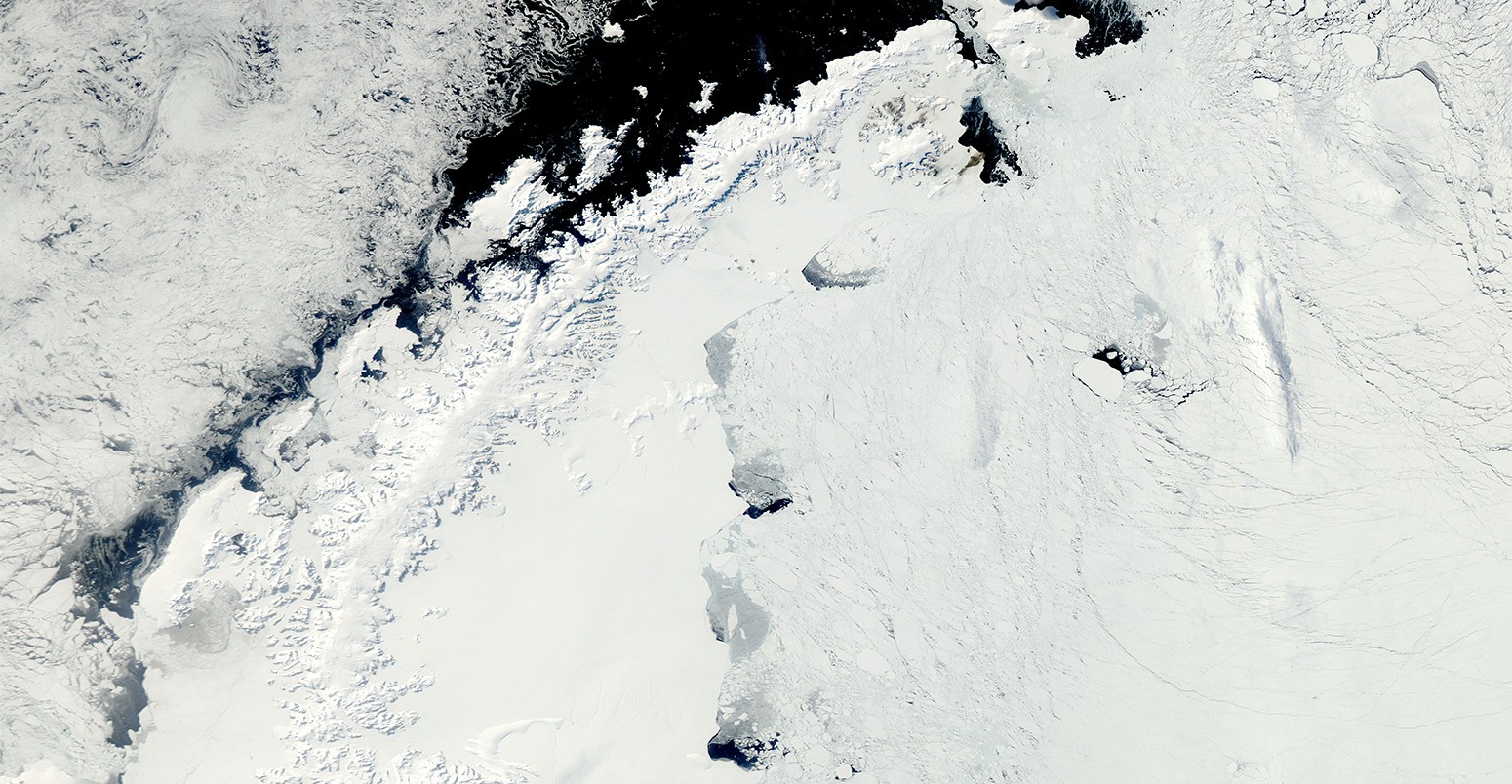
Antarctic Larsen-C ice shelf at risk of collapse, study warns
Robert McSweeney
05.13.15Robert McSweeney
13.05.2015 | 12:01amIn the past 20 years, warming temperatures have caused two ice shelves in Antarctica to collapse into the ocean. New research points to a third shelf, more than twice the size of Wales, which has thinned so much that it could now also face collapse.
The loss of the shelf would allow glaciers to flow more quickly into the ocean, pushing sea levels beyond current projections for this century, the researchers say.
Ice shelves
An ice shelf forms when a glacier on land reaches the coast and flows into the ocean. If the ocean is cold enough, the ice doesn’t melt. Instead, it forms a permanently floating sheet of ice.
Ice shelf schematic. Source: British Antarctic Survey.
The Larsen ice shelves sit at the tip of the Antarctic Peninsula, the northernmost part of the mainland. Originally there were four. But Larsen-A collapsed in 1995, followed by Larsen-B in 2002. Larsen-C, the largest section, and Larsen-D are all that remain.
Images: NASA Earth Observatory, gif by Rosamund Pearce for Carbon Brief
The new study, published in The Cryosphere, says that Larsen-C is thinning rapidly.
Using satellite data, the researchers show that from 1998 and 2012, the ice shelf has thinned by four metres, and is now sitting one metre lower in the water.
The British Antarctic Survey (BAS), whose scientists led the research, produced a short video to explain their findings.
Lead author Dr Paul Holland and Director of Science Prof David Vaughan, both from BAS, explain the new research. Source: British Antarctic Survey.
Two-pronged attack
The Antarctic Peninsula is one of the fastest warming regions on Earth. Temperatures have risen by 2.5C in the past 50 years, the researchers say.
A separate study last year found that warming air was the principal cause of the Larsen-B collapse. When warm air melts the top of an ice shelf, pools of water form on the surface. The water seeps into cracks in the ice, eroding and widening them until the ice shelf splits and pieces break off. This is how icebergs are formed, in a process called ‘calving’. Larsen-B collapsed because of rapid and widespread calving, the researchers found.
Ice shelves can also melt from underneath as the ocean warms. As the ice thins, it loses support from the sea bed as it retreats. This can make it unstable and vulnerable to collapse.
Previously, scientists weren’t sure whether the Larsen-C ice sheet was melting from the top down or the bottom up. In another video clip from BAS, Prof David Vaughan, who wasn’t directly involved in the study, says the research shows it’s actually both:
“All of the indications are that Larsen-C is thinning, and this current research tells us it’s thinning from above and from below – a two-pronged attack.”
Prof David Vaughan discusses the implication of the study’s findings. Source: British Antarctic Survey.
Another study, published in March, found that ice shelf melt in West Antarctica has increased by 70% in just the last decade. While research from last year suggests that the gradual collapse of the West Antarctic Ice Sheet, the part that sits on land, is already underway.
Sea level rise
Since ice shelves float on the water, when an iceberg breaks off or a shelf collapses entirely it doesn’t directly affect sea levels. But once an ice shelf has gone, the glaciers behind it are free to flow more quickly into the ocean, causing sea level to rise.
Research suggests that glaciers behind ice shelves may accelerate as much as five times following a rapid collapse. Vaughan says this happened with the loss of Larsen-C’s neighbouring ice shelves:
“We know that after Larsen-A and Larsen-B, a fairly large fraction of the total Antarctic contribution to sea level rise comes from those glaciers that once fed those ice shelves. Larsen-C is bigger and so the impact of losing Larsen-C would be a significant extra contribution to sea level rise.”
At the moment, scientists predict that sea levels will rise by over half a metre by 2100, even under moderate scenarios of greenhouse gas emissions. This would cause problems for coastal areas and low-lying cities, says Vaughan.
But the loss of Larsen-C would push sea levels beyond even this amount, he says.
Scientists on Larsen-C. Source: British Antarctic Survey.
Ice shelf stability
So, when might Larsen-C collapse? Vaughan says scientists can’t be sure:
“We really don’t know precisely when Larsen-C will collapse. It really might have a lifespan of decades or perhaps a century.”
There are different factors that affect the stability of the ice shelf, today’s paper says. Some would would trigger a collapse over many decades, but others could threaten it in a few years.
For example, a separate study earlier this year found a large crack in the Larsen-C ice shelf grew rapidly during 2014 – at one point extending 20 km in just eight months. This rift could cause a large section of ice to break off, generating “the largest calving event since the 1980s”, presenting a significant risk to Larsen-C’s stability, the study says.
While scientists might not be able to pin down exactly when the collapse of Larsen-C might be set in motion, today’s paper suggests it could well happen without much warming.
Main image: Larsen ice shelf, Antarctica.
Update: gif added on 13/05/2015. Holland, P.R. et al. (2015) Oceanic and atmospheric forcing of Larsen C ice-shelf thinning, The Cryosphere, doi:10.5194/tc-9-1-2015.




